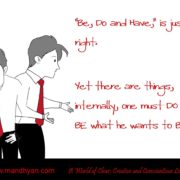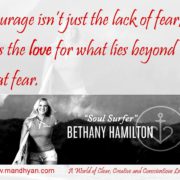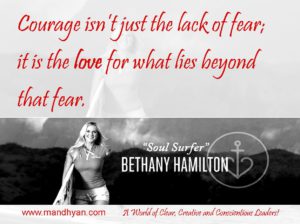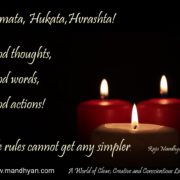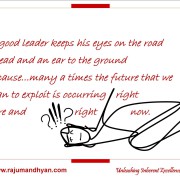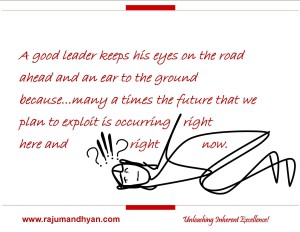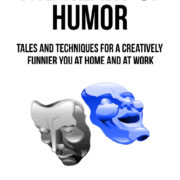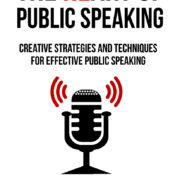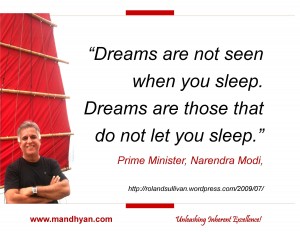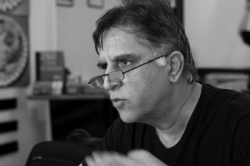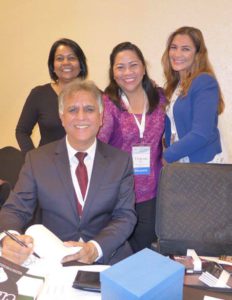Kinesthetic Charisma
Scores of times in my workshop InSpire Like a CEO, I have been asked the question, “At work and in life, how do you make an impact and sustain it?”
I have always answered that there are many ways, and many of them are being and doing things in a way that your presence and power is felt rather than forced upon others.
Then there is that usual question about “what about body language?”
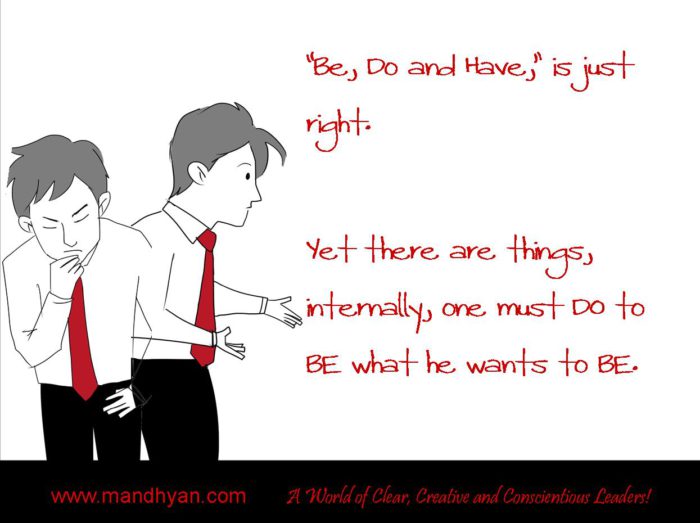
Be, Do, Have.
I must confess that for both these questions the answer is not a simple one and it just can’t be a list of bullet points to follow. A few years ago I wrote an article Authentic Impact, that will help but, well, here’s an expanded list of bullet points to back it up.
Yet before you scroll down, I want you to ponder and munch upon a thought that claims, “You are almost always communicating,” or differently stated “You are never not communicating.” What this implies is that your posture, your motions, your expressions, your eyes and the way you breathe all, always are making some kind of a statement.
The other thing that I need you to ponder and munch upon is the fact, that the first impressions you make can be lasting impressions and first impression are made in less than seven seconds. Well, that used to be the truth until the digital and the mobile world hit us. Nowadays, I hear first impressions, at least the online ones, are made in less than three seconds.
Well, in any case back onto real world impact here are my eleven secrets to building and possessing a powerful Kinesthetic Charisma.
- Trust Yourself
This is tantamount to ‘know thyself’ and ‘like thyself’ the way you are, whatever that way be. You see if you don’t like yourself then your discontentment with yourself oozes out of you like foul body odor. Yes, it does!
Thus, spend time with yourself. Talk to yourself. Accept things about yourself. Change things you can and learn to live with things you cannot change. The easiest thing to change about yourself is how you dress and the toughest thing to change about yourself, no not your height, is your worldview. In all cases accept and trust yourself as you are.
- When you Walk into a Room, Walk Right in
If you have chosen to be somewhere, with some people then be there a 100%. Don’t dilly-dally at the door or by the window. Walk right in and physically announce yourself. Your hesitations, your inhibitions will be construed as lack of confidence, lack of trust in yourself.
- Stand Tall before you Sit
Spend a little time spending standing tall and letting people size in and absorb your newly ironed suit and the length, or lack, of your physicality. Stand as if you are wearing a light, crisply ironed suit and you are unworried about the suit picking up creases. Stand tall, relax your shoulders, hang your arms by your side or hold a glass of wine, breathe normally and keep your chin slightly tilted up. Think Clint Eastwood even though you might be Danny de Vito.
- When you Shake hands, Shake Them Well
Oh no, that doesn’t mean squeeze, crush or pump. It means when shaking hands with a person of the same sex place your hand all in, wrap the thumb around and give it a reassuring squeeze. In your mind say to them that you like them and they will read your mind through the process of conduction. When shaking hands with a female, that is if you are male, offer an open hand and let them shove their hand all in. You just wrap around gently and close. Tell them with your eyes that you like meeting with them. Mentally announce, “Mucho gusto!”
- Sit Upright and Cool before You Talk
When you sit, find a good spot from where you can see everyone and everyone can see you too. Don’t hunch, don’t slouch, and don’t sink into the sofa. Push your butt deep into the chair, straighten your lower back, drop your shoulders and let your chest breathe normally. Yes, keep the chin tilted slightly. Look around as if to survey, to measure. Smile as you do it.
- Mind your Micro Expressions
If you haven’t yet, then please read up Dr. Mehrebian’s 55+38+7 rule and remember that it is only valid in certain laboratory conditions. But, yes, it does help to get the point through for many aspects of people interactions. Yes, of course, remember that you are almost always communicating. So if you see something or someone that you do not like then do not grimace or pout. Hear yourself say it to yourself in your head that you don’t like something or someone in the room but don’t let your mind tell it to your face. Stick a smiley on your face and let it stay there.
- Talk only When you Know they want to Hear you
Talk when there is pause in the noise the world of business meetings usually puts. Talk when the cacophony levels drop. Talk when people are getting edgy because you haven’t added to the noise yet. Speak out your words softly, but let them carry a big stick. Speak up, enunciate and, for heaven’s sake, think it out before you spew it out. Read my book, the HeART of Public Speaking, to learn how to think on your feet.
- Speak from the Gut, Throw your Voice
Power up your voice and pitch it far and strong by backing it up with the air from your diaphragm. Don’t speak through nose, don’t mumble. Stand up, sit up, chin up and then speak up nice and slow. Raise up the decibels high enough for your words to be heard by the person most distant from you in the room. Speak as if you are speaking to that last person in the room. Speak…do not shout.
- Pause Between Thoughts, Examples
If you have done your thinking before speaking; If you are composing, editing and structuring your thoughts well and if you are sitting up and speaking from the gut then your pauses and your pausing will be a but natural outcome of your powerful performance. Your pauses will allow you to think through the next bunch of thoughts, ideas and examples. Your pausing will allow time for your audience to digest and appreciate your proposals.
- Let your Eyes listen
You know I am teasing you with that one, don’t you? What I mean is watch people understanding, absorbing and accepting your ideas and examples. They will be nodding, smiling and turning towards you when you talk. That is listening to them while you are doing the talking. If you see less of nodding, smiling and people turning towards then it is time to change pace, change style, change content off your conversations.
- Stay Open
Just because you now know how to trust yourself, walk into a room well, shake hands properly, hold your chin up and enunciate well does not make you an Einstein, a Drucker or the Dalai Lama!
The whole process of “doing” things to become charismatic kinesthetically has an underlying promise by you to stay open, stay flexible and adaptable to changing circumstances and what is being co-created in good conversations.
There you go! Eleven bullet points to acquiring Kinesthetic Charisma as a leader, as a CEO who would like to Inspire and influence his world.

